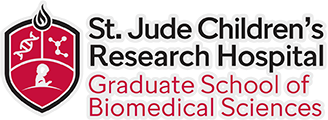Blake began his career in science in 2017, and quickly realized that biomedical research was his calling. As an undergraduate at the University of Oregon, Blake worked with Dr. Matt Smear to discover novel olfactory search behaviors. After completing his degree, Blake worked with Dr. Emily Sylwestrak to characterize cell types in the habenula, a small brain region crucial for encoding reward. The biomedical science program at St. Jude offered Blake the opportunity to explore his interests in molecular biology and neuroscience in the context of catastrophic childhood disease. Blake hopes to use his training at St. Jude to pursue a career in industry or government.
Blake maintains the program at St. Jude is incredibly unique among grad programs in that it offers access to both fundamental and translational research. The close connection to patients and physicians guides every aspect of science, making even fundamental questions feel clinically impactful. The shared sense of purpose and commitment to a core mission creates a very collaborative environment that attracted Blake to St. Jude. Although most of his training is in neuroscience, he is confident the opportunity for collaboration with leaders in diverse fields like immunology or structural biology allows students to gain experience in a wide range of techniques, fostering a more holistic understanding of the biological questions that we’re asking.
Hometown Eugene, Oregon


